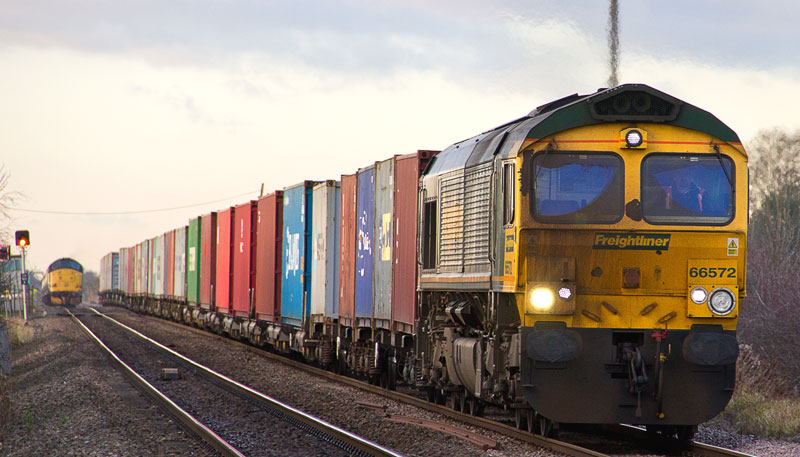The biggest issues of the month explored | Rail
Inside Track
RAIL
£42M Channel Tunnel to Wembley freight plan
Project involves enlarging a tunnel along route to north west London
By Thomas Johnson
Channel Tunnel infrastructure operator Getlink is promoting a plan to upgrade the rail freight route between Kent and north west London to a higher capacity gauge. The route runs between Dollands Moor and Wembley via Ashford, Maidstone, Catford in south east London and north east London.
Getlink wants the new gauge to be W12, which is the standard across most of Europe. It estimates that the route will cost £42M to upgrade.
W12 has a height clearance of 2.9m and a width of 2.6m which is taller than that of most UK railway lines. W9 gauge is used on some UK lines and allows for shipping containers of a height of 2.74m and a width of 2.6m.
 Getlink wants to upgrade freight links in the South East
Getlink wants to upgrade freight links in the South East
W12 allows greater clearance for refrigerated containers and will make the line an alternative freight route to High Speed 1, which was designed to W12 standards. W12 is already used on High Speed 1.
According to Getlink, construction works needed to convert the route via Maidstone to W12 include widening Saltwood Tunnel near Folkestone by around 50mm, chamfering a number of station platforms and installing trackside equipment in some areas.
The track operator believes the work could take two to three years but said that this relatively short time frame could cause a high level of disruption. If the work were to be extended over three to five years the resulting disruption would be minimal, Getlink said.
Getlink chief corporate and public affairs officer John Keefe said: “This [the conversion to W12] has been seen as a priority for enhancement for the last 30 years since the Channel Tunnel was built.
Keefe said Network Rail’s transition to Great British Railways (GBR) has offered Getlink renewed hope that the work to convert the route to W12 can take place.
A report for Getlink by transport and infrastructure economic consultancy Volterra put the £42M price tag on the scheme to upgrade the gauge on the route between Dollands Moor and Wembley via north London. This had previously been estimated at up to £182M.
Volterra’s report also says that additional options of converting the longer route from Dollands Moor to Wembley via Tonbridge and around south London via Redhill would cost £108M.
Keefe said that the need for a gauge conversion to W12 was supported by economic and decarbonisation arguments. He added that transporting freight by rail was significantly more affordable and fuel-efficient than by road.
He noted that according to freight trade association Logistics UK, £250M a day is lost from the UK economy through a variety of factors associated with inadequate freight transport systems.
He cited inefficiencies, goods not being delivered, wastage and trucks being immobile.
According to figures from the Rail Delivery Group, 1t of freight transported by rail produces 76% fewer carbon emissions compared with road even when both are diesel powered.
Keefe said: “You’ve already got a very clear, direct comparison [rail freight against road freight]. The argument we’re trying to make is that the return on this investment is so obvious and so huge that this is the ideal kind of project to be starting up.”